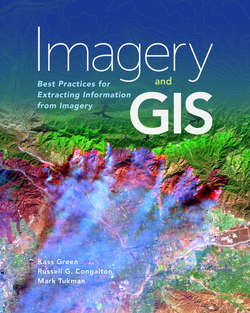Читать книгу Imagery and GIS - Kass Green - Страница 29
На сайте Литреса книга снята с продажи.
Sensors
ОглавлениеThis section provides an understanding of remote sensors by examining their components and explaining how different sensors work. As mentioned in chapter 1, a wide variety of remote sensors have been developed over the last century. Starting with glass-plate cameras and evolving into complex active and passive digital systems, remote sensors have allowed us to “see” the world from a superior viewpoint.
All remote sensors are composed of the following components, as shown in figure 3.2:
Devices that capture either electromagnetic energy or sound, either chemically, electronically, or biologically. The devices may be imaging surfaces (used mostly in electro-optical imaging) or antennas (used in the creation of radar and sonar images).
Lenses that focus the electromagnetic energy onto the imaging surface.
Openings that manage the amount of electromagnetic energy reaching the imaging surface.
Bodies that hold the other components relative to one another.
Figure 3.2. The similar components of the human eye and a remote sensor
Our eyes, cameras, and the most advanced passive and active digital sensors fundamentally all work the same way. Electromagnetic energy passes through the opening of the sensor body where it reaches a lens that focuses the energy onto the imaging surface. Our brains turn the data captured by our retinas into information. Similarly, we convert remotely sensed image data into information through either manual interpretation or semi-automated image classification.
